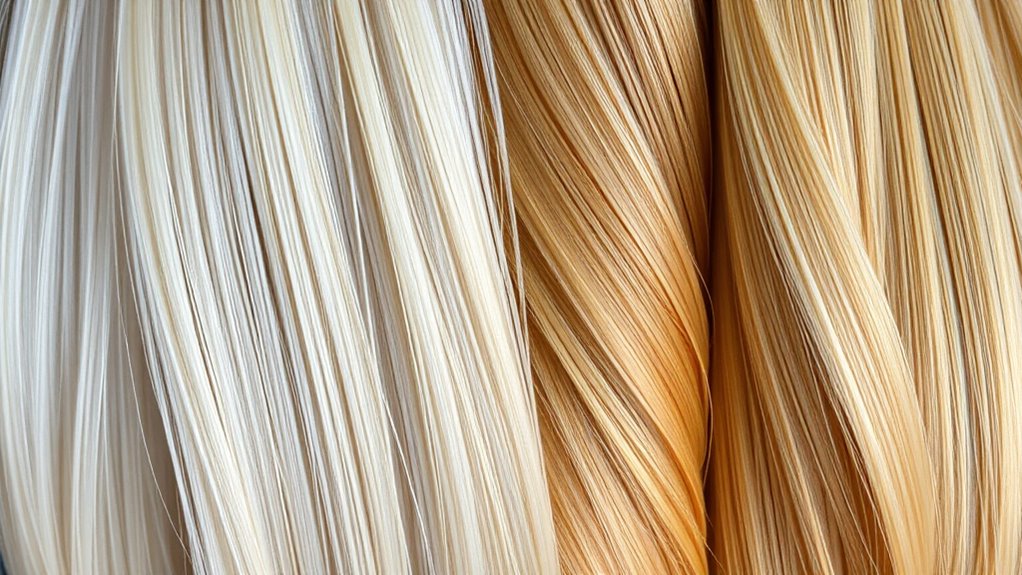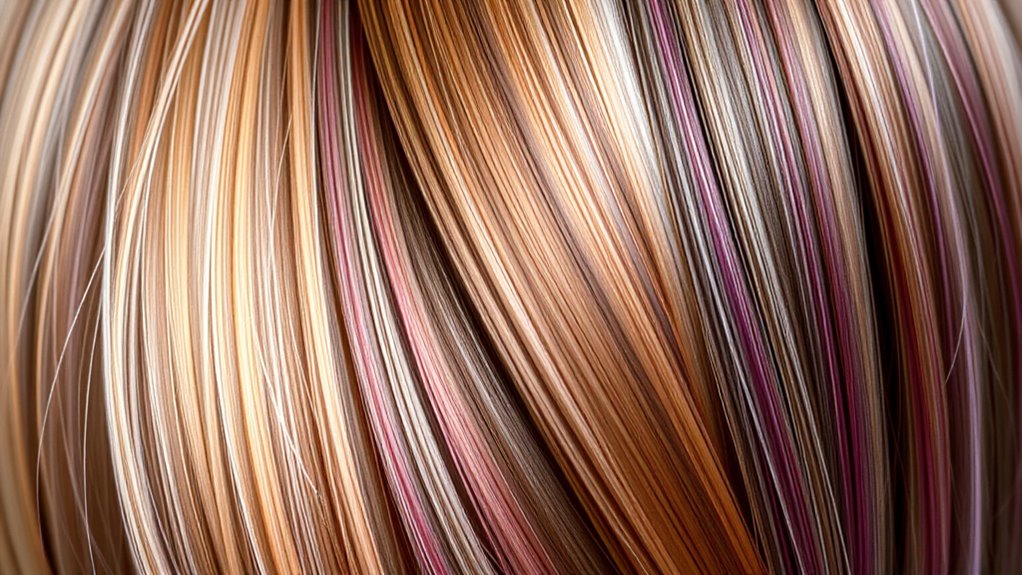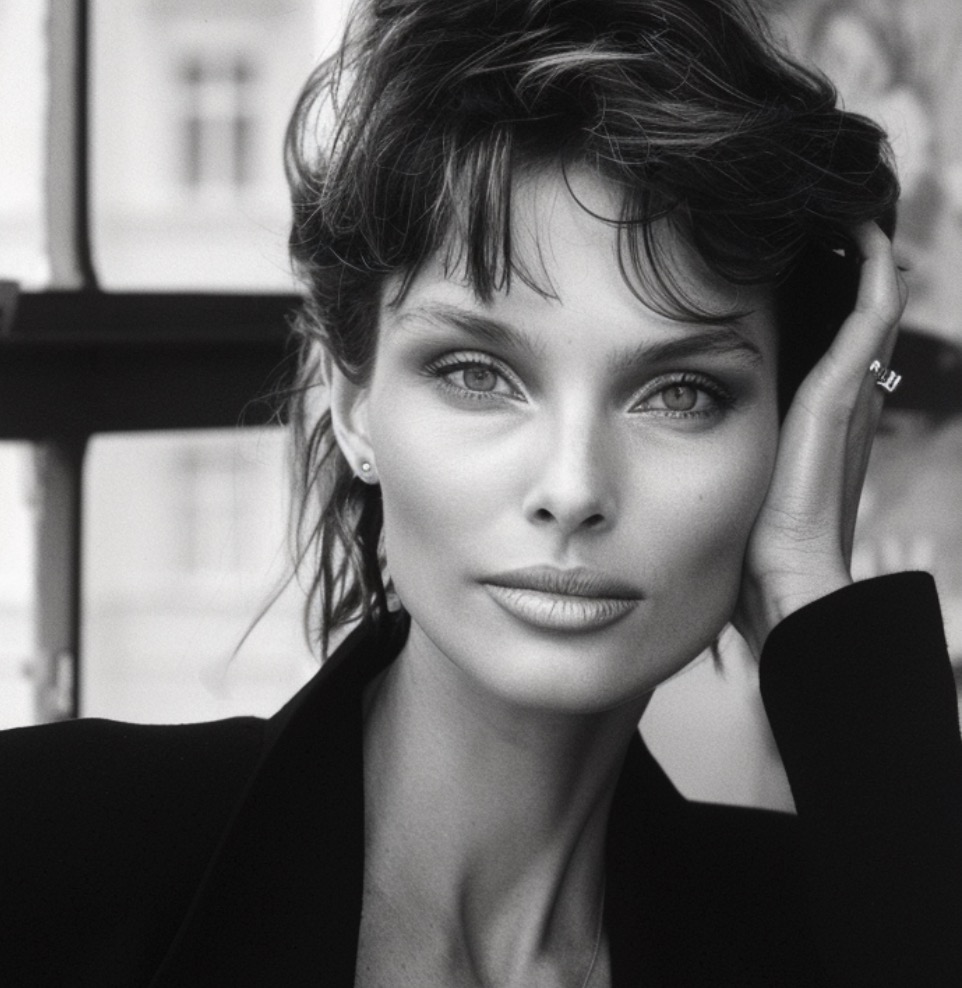Understanding color theory for hair involves knowing your hair’s level, undertones, and tone. Levels range from black (1) to light blonde (10), guiding your color choices. Undertones, whether warm (red, gold) or cool (ash, beige), influence how color interacts with your natural hue. Matching shades with your undertones and levels helps prevent brassiness and dullness. If you want to learn more about creating your perfect hair color harmony, keep exploring these essential concepts.
Key Takeaways
- Understanding hair levels (1-10) helps select appropriate shades for desired depth and brightness.
- Recognizing warm, cool, or neutral undertones ensures color harmony and prevents brassiness or dullness.
- Complementary color schemes enhance contrast and visual interest based on the color wheel.
- Matching colors with natural undertones enhances natural-looking results and personal style.
- Knowledge of color psychology guides choosing shades that reflect mood and personality.

Understanding color theory is essential for achieving the hair color you want, whether you’re dyeing your hair at home or working with a professional stylist. When you grasp the basics of hair color psychology and how complementary color schemes work, you can make smarter choices that enhance your natural features and express your personal style. Hair color psychology reveals that different shades can evoke specific moods or impressions—blonde tones might suggest friendliness and openness, while darker hues can convey sophistication or mystery. Knowing this helps you pick a color that aligns with your personality or the message you want to send.
Complementary color schemes play a vital role in hair coloring because they involve pairing colors that sit opposite each other on the color wheel. For example, if you have cool-toned hair with blue undertones, adding warm highlights like copper or gold can create a striking contrast that makes your hair pop. Conversely, if your base color is warm, cool-toned shades such as ash blonde or smoky gray can balance and soften your look. Understanding these relationships allows you to choose shades that complement your natural undertones rather than clash with them, resulting in a more harmonious and flattering appearance.
Levels and undertones are equally important in achieving the perfect hair color. Levels refer to the lightness or darkness of a color on a scale from 1 (black) to 10 (lightest blonde). Knowing your current hair level helps you select a dye that will either enhance or subtly modify your natural shade. Undertones—whether warm, cool, or neutral—are the subtle hues beneath the surface that influence how a color appears once applied. For example, a level 7 brown with warm undertones might have hints of red or gold, while a cool undertone may lean toward ash or beige. Recognizing your hair’s undertones guides you in choosing colors that harmonize with your base, preventing unwanted brassiness or dullness.
Additionally, the concept of undertones can be crucial in predicting how a new color will look on you and avoiding unwanted results. When you combine an understanding of levels, undertones, and complementary color schemes, you gain the ability to predict how a new color will look on you. This knowledge empowers you to avoid common mishaps like ending up with an undesired brassy or muddy tone. It also helps you communicate more effectively with your stylist, ensuring they understand the exact result you want. Whether you’re aiming for a vibrant, bold transformation or a subtle, natural enhancement, mastering these elements of color theory enables you to make confident, informed decisions. Ultimately, understanding these concepts makes the hair coloring process less intimidating and more enjoyable, leading to results that truly reflect your personality and style.
Frequently Asked Questions
How Do I Identify My Natural Hair Undertone?
To identify your natural hair undertone, start with a hair color analysis, examining whether your hair has warm, cool, or neutral hues. Use undertone identification techniques like checking if your hair looks best with gold or silver jewelry—gold for warm undertones and silver for cool. Observe your skin’s undertone as well; it often matches your hair’s. This helps you determine your natural hair undertone effectively.
Can I Change My Hair Tone Without Bleaching?
You can definitely change your hair tone without bleaching by exploring hair dye alternatives and temporary color options. These products deposit color onto your hair without damaging the cuticle, making it easier to experiment. For example, try semi-permanent dyes, shampoos, or rinses in shades that complement your natural undertone. Just remember, the results are temporary, so if you love the change, you can always try a more permanent solution later.
What Colors Complement Cool Versus Warm Undertones?
You should choose colors that complement your undertones by using complementary colors from your seasonal palette. For cool undertones, opt for shades like warm reds, peach, and golden hues that create contrast. If you have warm undertones, go for jewel tones, icy shades, or cool browns that enhance your warmth. Matching your seasonal palette guarantees your hair color harmonizes and flatters your natural undertones, making your look more vibrant.
How Often Should I Retouch My Hair Color for Longevity?
Your hair color is like a delicate flower that needs regular watering. Typically, you should retouch every 4-6 weeks for ideal hair color maintenance. If you have darker shades or vibrant tones, consider more frequent touch-ups. For DIY retouch tips, use a gentle root touch-up kit and avoid overprocessing. Keep an eye on your color’s fade, and schedule retouches accordingly to keep your look fresh and vibrant.
Are There Specific Colors to Avoid Based on My Undertones?
You should avoid colors that clash with your undertones, like overly warm shades if you have cool undertones, or vice versa. Seasonal color palettes can guide your choices—cool tones for winter, warm for summer. Also, prioritize hair dye safety by choosing gentle, ammonia-free dyes. This helps prevent damage and guarantees your color complements your natural undertones, giving you a flattering and healthy look.
Conclusion
Understanding hair color theory is like mastering a recipe—you mix undertones, levels, and tones to create your perfect look. I once watched a client transform from dull to dazzling by simply balancing her warm and cool hues, like blending spices to taste. When you grasp these concepts, you’re the chef of your hair, confident in crafting shades that truly suit you. So, experiment, have fun, and let your hair be your canvas!










